DFI-India 2024: 13th Annual Conference
Program Highlights
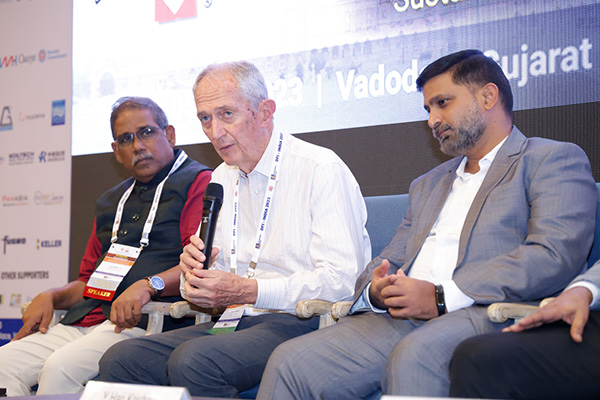
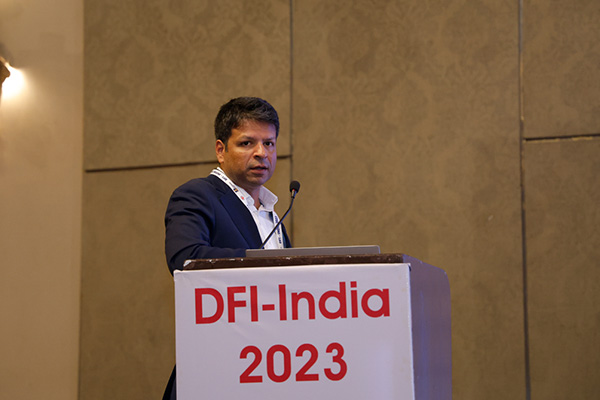

Conference Themes
- Sustainability and Safety for Efficient Geo-Construction, and Reuse of Existing Deep Foundations
- Deep Foundation and Deep Excavation Techniques
- Deep Marine, Near-shore and Coastal Structures - Design & Construction of Deep Foundations
- Ground Improvement Techniques
- Advancements in Subsurface Characterization & Testing for Foundations Performance and Monitoring including Automation, Artificial Intelligence and Machine Learning.
- Research, Experimental and Numerical Methods in Deep Foundations, Deep Excavations, and Ground Improvement Technologies
- Special Foundations like Large Diameter Piles, Helical Piles, Monopiles, and Driven Piles - Innovative Methods & Foundation Equipment
- Legal & Contractual Aspects, Project Management of Deep Foundation Construction Projects, and any other interesting papers on topics in the deep foundation industry
Conference Program
Keynote Presentations
1. Sustainability in Geotechnical Construction – A Global and Indian View
This talk will introduce the principles of sustainable development as defined by the UN SDGs. There are 17 Sustainable Development Goals, which every UN country has signed up to achieve by 2030. These Goals are global and holistic, covering all areas of sustainability. They are also used by several geotechnical and other construction companies to report on sustainability. This means the Goals become a common language to communicate on sustainability.
Why:
- Climate change is real. The world is a much hotter place. Extreme weather patterns are seen routinely. The Paris accord, signed by 196 countries agreed to limit temperature rise to below 2° C (preferably 1.5° C) compared to preindustrial levels to be achieved by the end of 21st century.
- Drivers: There are several drivers for action to be taken on this, which range from new legislation, client, and employee demand, managing climate change risk and efficiency savings to name a few.
- Why is it relevant to the construction industry: Because it is one of the major contributors. 40% of the global emissions are from building construction & operation and foundations account for 15-23% of buildings embodied carbon. A major focus area is carbon reduction to achieve net-zero by 2050 in several countries and by 2070 in India.
How:
A major challenge is how to systematically reduce the carbon footprint in a steady manner so that the above net zero goals can be achieved. The talk addresses the 3 scopes of carbon reduction and how construction companies can work to reduce them.
Scope 1: Emissions from fuel use on site. These can account for up to 20% of total emissions. Methods to reduce this are presented using for example efficiency improvements, biofuels, electrification etc. Examples from real projects in Singapore, US and Norway will be presented.
Scope 2: Emission from electricity use in offices and yards: Options for efficiency improvements, use of eco power from hydro, solar and wind are discussed.
Scope 3: Emissions related to transport, travel, waste and most importantly materials (cement, concrete, steel) which can account for up to 80% of total emissions. The talk will give examples on how optimisation in transport and travel and the use of low carbon materials etc. can help in carbon reduction.
The talk initially starts with a global view and then moves to how the geotechnical construction industry in India is responding (with examples) and explores opportunities for the future.
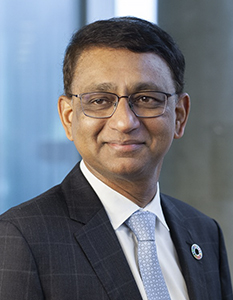
Dr. Venu Raju
Senior Advisor, Sustainability
Keller Group plc.
Dr. Raju was born in India and studied civil engineering at the Indian Institute of Technology, Madras. He completed his Masters and PhD in structural engineering in the US (Rice and Duke university) and a doctorate in geotechnical engineering from Karlsruhe University in Germany.
He joined Keller in 1994 and was first posted in Malaysia as a project Engineer and went on to become the Managing Director of Keller Malaysia, Singapore and India, before taking on the role of Regional Managing Director, Asia in 2005. In 2012, he was invited to join the Group Executive Committee, and was appointed as Group Director for Engineering & Operations and nominated to the Keller plc board in 2017.
He is the chair for Keller’s sustainability steering committee and in the role of a senior advisor, Sustainability since January 2024.
2. Evaluation of Ground – Pile Interactions from Pile Load Tests
Deep foundations, especially, piles constitute a very crucial component of infrastructure development. Design and installation of piles pose challenges because of several aspects, viz., site conditions, variability of geotechnical parameters, methods of design, construction, etc. The design in particular is based on limited data from either laboratory measured parameters or results from in situ tests, integration of these over the length of the pile, but with non-accountability of installation effects on the parameters, empiricism in design methods, etc. The presentation firstly explores the variability in pile capacity estimation at three sites, alluvial and marine by three methods. It becomes imperative to conduct an initial monotonic or cyclic pile load test to validate the prediction. Conventionally this test is used casually to justify the design. However, it is established in the paper, that the load – settlement curve is a gold mine if analyzed rationally. The global ground – pile interaction parameters can be revealed and compared with those used in the a-priori design. Data from axial compression, pullout and lateral load, and bi-directional load tests are analyzed to identify and document possibly for the first time the fallacies and anomalies in our understanding of ground behavior/response and design approaches.
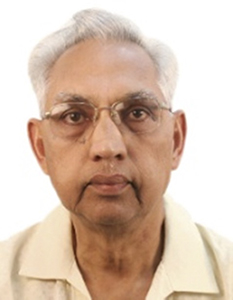
Professor M. R. Madhav
Visiting Professor, IIT Hyderabad
Professor Emeritus, JNTU, Hyderabad
Prof. M. R. Madhav, AICTE-INAE Distinguished Visiting Professor, Visiting Professor, IIT, Hyd. & Professor Emeritus, J.N.T.U, Hyderabad, Resource Person, RGUKT, and Advisor/Consultant to several organizations, is well known internationally as Researcher, Teacher and Consultant and has contributed significantly to the Practice of Geotechnical Engineering over the last five decades. He is Fellow of Ind. National Academy of Engineering, Indian Geotechnical Society & Institution of Engineers (India), President, International Association of Lowland Technology (2010-18), Vice President for Asia, International Society of Soil Mechanics & Geotechnical Engineering (2005-2009), recipient of Keucklemann, Prof. Mehra Research, Pundit Jawaharlal Nehru Birth Centenary Research Awards, and Doctor of Science of the Indian Institute of Science, Distinction in Engineering Technology from the Central Board of Irrigation and Power, Bharat Ratna M Visweswaraya Award, Gopal Ranjan Research Award of IIT, Roorkee, IGS – M S Jain award, Vishwakarma Award for Academic Excellence from Construction Industry Development Council, Dinesh Mohan Award from Ind. Geotechnical Society, Distinguished Teacher award from IIT, Kanpur, Distinguished Alumnus award from IISc Bangalore.
3. A novel, simple but effective method for assessing pile base resistance in sandy soils
As well known, due to punching failure mechanisms the full mobilization of pile base resistance qbu in sandy soils is attained at very large relative displacement w/d (w = pile head settlement; d = pile diameter), which may exceed or equal to 100% of the pile diameter. Nevertheless, it is generally estimated by theoretical methods based on the limit equilibrium. Several bearing capacity factors are available from literature, being those given by Beretzantev et al. (1961, 1965) the most widespread used in current practice. Therefore, the bearing capacity factors estimated by this approach are associated to pile settlement always inadmissible and then meaningless from a practical viewpoint. Furthermore, since the experimental detection of the pile resistance is carried out from the results of load tests run usually until to a relative settlement w/d at most equal to 10%, there is a gap between the theoretical evaluations and the experimental data. To overcome this issue, a novel, simple but effective analytical method for the prediction of the response at pile base is proposed, thus allowing for an estimation of the pile base load corresponding to a given displacement. The reliability of the proposed method is checked against 50 well-documented in-situ pile load tests performed worldwide (diameters from 0.4 m to 2 m and lengths from 6 m to 91 m), all of them of cast in situ type (bored, CFA and FDP) and embedded in sandy soils.

Professor Alessandro Mandolini
University of Campania (Italy)
Chair of ISSMGE TC212
Prof. Madolini is working as a full-time professor of “Foundation Engineering” at Department of Engineering at Università degli Studi della Campania “L. Vanvitelli”. He is also the Head of the Department of Engineering. He graduted in Civil Engineering in the year 1989 at Università di Napoli “Federico II”, Italy. He obtained his Ph.D in Geotechnical Engineering from Università di Roma “La Sapienza” and Università di Napoli “Federico II”, Italy in 1993. He is a referee for several International Journals, Reviewer for several National and International Conferences, Foreign Examiner for Doctoral Dissertations. He is serving as an elected Chairman of the ISSMGE TC212 “Deep Foundations”. He received Italian Geotechnical Association (AGI) Award for the PhD thesis in the year 1995. He also received Gold Research (Bishop) Medal by the Institution of Civil Engineering of London (UK) in 1998. He was awarded with IACMAG Excellent Paper Junior Award in 2008. Prof. Madolini is a member of UNI/CIS/SC7 for the “Eurocode 7”. He is an author and/or co-author of more than 150 papers for scientific journals, national and international Conferences. He is also a co-author of a book titled “Piles and Pile Foundations” edited by CRC Press Taylor & Francis Group.
4. Failure analysis, Design & Installation of Offshore Conductor Piles – Case Studies
Conductor Pile is the first string used to support well apparatuses and equipment’s as a drilling diverter. Typically, these piles run from the seabed and set at depths providing a conduit to allow circulation of drilling fluid and case off unconsolidated formation. The conductors should have adequate bearing capacity to carry safely the loads due to equipment mounted on it and also the operational loads. The soil below the conductor base should not undergo hydraulic fracturing due to the pressure of the drilling mud. The main objective is to design and install conductor to meet the engineering and operational objective. Geotechnical challenges involve thorough characterisation of the ground, establish setting depths (to meet the drilling safety requirements) and to safely drive the piles to the design depths. The industry practice of estimating hydraulic fracture pressure and the setting depths often leads to either unconservative or overestimated design depths. Failure is imminent with unconservative estimates and/or lateral heterogeneity of stratigraphy. The contrary assessment leads to design and installation challenges. Very deep slender conductor piles pose driving challenges and at times surprise with hammers being damaged.
The keynote presents two case studies in Offshore South East Asia. The first on the failure of a live conductor piles (splitter wells) addresses the root cause analysis of failure and mitigative measures adopted in safely securing some slots of conductors, while the second case study discusses on evaluating the hydraulic fracture in determining the setting depths, pre-installation driveability analysis for hammer selection and compared with the observed installation parameters after successfully installing the conductors.
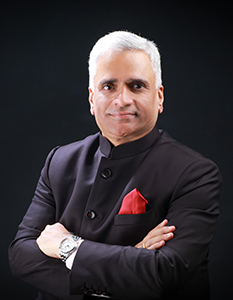
Dr CR Parthasarathy
Founder, Chairman and Managing Director
Sarathy Geotech and Engineering Services Pvt. Ltd.
Dr CR Parthasarathy started his career as a Geotechnical Engineer in 1993 and involved in numerous large scale site investigation/engineering studies for both Offshore and Onland projects viz., multi-storeyed complexes, refineries, embankments, bridges, water-retaining structures, offshore platforms, pipelines, Jackup rigs etc. He has rich experience in Site Characterisation & Deep Foundation testing in India and abroad. He has delivered 100’s of Lectures on various forums on site characterisation, deep foundation testing and casestudies. As a technical partner of Pile Dynamics USA, he is instrumental in promoting quality testing of deep foundations in India and Middle East and also authorised trainer for high strain dynamic pile testing. He has trained more than 1500 people. He has achieved EXPERT Level in the PDI/PDCA Proficiency Test on dynamic measurement and analysis. He is the life fellow of Indian Geotechnical Society (IGS), Elected National Executive Member of IGS for three consecutive terms, Past Chairman of IGS-Bengaluru Chapter and currently the Executive Committee Member of DFI-India.
5. Advancement in Ground Improvement Techniques for The Construction of Load Supporting Columns in Soft Soils
The ground improvement techniques per se have not changed over many decades. The techniques used in the industry fall under one of the three categories: (i) consolidation, (ii) forming of load supporting columns (or combinations of (i) and (ii)), (iii) compaction. Equipment developments however did progress considerably in the last 2 decades. These developments allowed improvement of the products in areas of quality, cost, time and, offer solutions for difficult conditions which previously were not, or only with costly efforts be able to be resolved, due to limitations in the capability of the equipment. This Paper will report about the equipment and technique improvements under category (ii) above. The load supporting columns referred to are Stone Columns, Wet Deep Soil Cement Mix Columns and Full Displacement Columns (also known as rigid inclusions). For each of the products a very brief historical recap is advanced, and the basic technical principles for the type of column is explained for better understanding of the advancements made. At the end of each chapter there will be reference to a project on which the technique was used. Stone Columns Construction (SC) refers to the Hong Kong Boundary Facility project (marine) which involved the use of Gravel Pumps and the Pressure Chamber Injection System for the installation of the SC. The Deep Wet Soil Cement Mixing (DCM) refers to the 3rd Runway Project in Hong Kong which required the installation of large diameter DCM elements with cross sectional areas of up to 6 m2 into depths of 40 m. Both Hong Kong Projects needed to be partially carried out in headroom restricted conditions as a requirement of the Airport Aviation Department. Rigid Inclusions are referred to the extension of the Soekarno Airport, Jakarta, Indonesia where the technique was applied successfully.
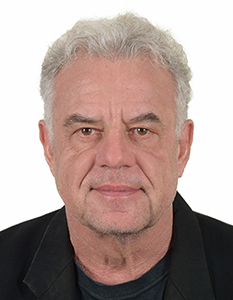
Mr. Thomas Domanski
Senior Consultant
TDA Geotechnical Services Sdn Bhd
Thomas Domanski currently holds the positions of Senior Consultant and Proprietor of TDA Geotechnical Services Sdn Bhd Malaysia. He obtained his Master of Civil Engineering majoring in Geotechnical Works and Soil Mechanics in 1983 at the Technical University Braunschweig, Germany. In 1988 he joined the Bauer Spezialtiefbau GmbH, where he worked for over 32 years. He contributed in many record and milestone setting foundation projects including the Twin Towers in Kuala Lumpur, carrying out the deep seawater section for the Bored Pile Foundation of the HK Zhuhai-Macau Bridge, and latest the deepest foundation piles recorded in the world for the KLCC Lot L&M Development for a proposed 800 m high Tower. In July 2020 he retired from the Bauer Group and formed his own geotechnical Consultant firm TDA Geotechnical Services Sdn Bhd. He is the author of many papers for international conferences to present his experience in ground improvement, deep piling works and retaining structures. Currently, he is working and assisting Foundation Contractors in Malaysia in the execution of their projects in difficult geotechnical conditions and off-shore ground improvement stone columns.
6. Ground settlements from construction of the tunnels for the Crenshaw/LAX Transit Corridor Project
Los Angeles Metro awarded the $1.3 billion contract to Walsh/ Shea Corridor Constructors (WSCC) to build the Crenshaw/LAX Transit Corridor Project, an 8.5-mile light rail that will run between the Expo Line on Exposition Boulevard and the Metro Green Line at LAX Airport. The contract included eight new stations, five at grade level and three cut-and-cover braced excavations. The project passes through densely constructed areas beneath streets so extensive monitoring of surface movements was required. WSCC subcontracted Geocomp to provide real-time data from instrumentation to evaluate the construction effects on existing facilities of the underground tunnels and excavations and surrounding structures throughout construction. Geocomp provided instrumentation and monitoring for over one mile of twin bored tunnels, three cut-and-cover/station excavations, and one low excavation location. Geocomp collected and integrated data from more than 2,000 sensors in near real-time. The monitoring effort was quite successful in identifying excessive settlements of the street at the start of the project. Once the cause of these excessive movements was corrected, the tunnel construction continued with street level movements of less than one-half inch. This presentation will describe the monitoring approach and show the results. It will demonstrate the value of real-time monitoring to help minimized the ground movements and associated damage from excavations made in urban areas for tunneling. The presentation will show the results and benefits of the monitoring program and also demonstrate the value of using real-time instrumentation data to reveal unexpected performance in time to develop effective risk mitigation solutions.
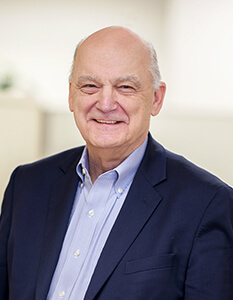
W. Allen Marr, Ph.D., P.E., NAE
Former CEO and Senior Strategic Advisor, Geocomp

Lucky Nagarajan
Director of Business Development, Consulting & Monitoring, Geocomp
W. Allen Marr, Ph.D., P.E., NAE
Dr. Allen Marr, Founder and Former CEO of Geocomp, has over 50 years of specialized expertise in design and construction of large earthwork facilities, value engineering for earthworks and earth retention systems, risk management for underground construction, and instrumentation and real-time monitoring systems. He has spent his entire professional career focused on incorporating the benefits of applied research in geo-engineering into civil engineering practice.
Lucky Nagarajan
Lucky has more than 20 years of experience with expertise in the design and construction of deep foundations. Throughout her career, she has traveled around the world working in different market sectors. Started out as a staff engineer to geotechnical engineer for consulting companies, then, progressing to general manager managing NA and SA operations for an international equipment manufacturer to director for a cutting-edge engineering solution, innovative technologies leader. She has worked on second biggest crude oil pump station in the country, sandpiper pipeline, Barrier wall design and construction of a tailings dam in Brazil, involved in SOE design and construction of permanent steel structure for Cuttack canal, Gowanus Canal dredging and East coast resiliency projects in NY, just to name a few. Nagarajan consistently endeavors to improve and contribute to the advancement of the geoprofession, increase involvement and career longevity for those serving it, and to increase outreach and recruitment efforts for those considering a geotechnical engineering career. Her passion for culture, community, nurturing young engineers, and STEM has led her to being an active member of technical associations such as DFI, ASCE, G-I, USSD, and ISSMGE. She is the chair of Women in Deep Foundations (WiDF) and Co-Founder of WiDF groups in Metro NYC, India, and Mexico, part of the Board of Trustees of DFI, serving as a member on the Women’s Advisory Board-Boston Chamber of Commerce, nominated to serve as ASCE Geo-institute Board of Governors and one of the Board of Directors for the ASCE Met Section.
7. Experience with Construction of Deep Raker Piles for Volta Bridge Project in Ghana
The Tema-Mpakadan Railway Project is the largest, and, probably the most ambitious railway project in Ghana. Covering nearly 100kms, the project includes an unprecedented 159 structures. The 300m steel bridge across Lake Volta, which is the most critical part of the project. The Volta Bridge consists of five spans of 60m each with the bridge made of steel girders.
Key aspects of the presentation:
- Reverse Circulation Drill (RCD), Vibro Hammer, 260 MT and 150 MT cranes and tugboats from different countries have been brought in to execute straight and raker piles.
- 1.6m diameter and 76m long raked concrete bored piles with permanent liners were installed as a part of the foundation system.
- Procedures, sequence and the planning that went into installation of raker piles.
- Special considerations like challenges in providing rollers, maintaining tremie position, concreting of the these raker pile will be highlighted.
- Also includes results of drivability analysis done to verify effectiveness of available vibro driver in lowering the casing up to desired depth and challenges in inclined liner position.
- Test results of post construction of piles.
- Overall learnings from this challenging international project.

Mr. Udai Veer Singh
Executive Vice President
AFCONS Infrastructure Ltd.
Mr. Udai Veer Singh has done his bachelor’s in civil engineering from SVNIT, Surat. He has done his masters in Geotechnical Engineering from IIT Kanpur. Currently he is working with AFCONS as an Executive Vice President. He has more than 2 decades of rich experience within Established Railway System and industry with immense experience in Permanent Way entailing Railway Infrastructure Projects, Track Linking (manual & by machines), Maintenance, Rehabilitation of Track, Track works Planning & Operation using Track Machine, AT Welding & Flash Butt Welding of Rails, Concrete Railway Bridge constructions, Station Yards Layouts etc. He is also experienced with the operation of Track Machines; Railway & Road Concrete Bridge Construction (Pre-Stressed, RCC, and Composite). Some of the key infrastructure projects he had been associated in the past include: Construction of heavy axle load Broad Gauge Track of Western Dedicated Freight Corridor, India; Construction of tunnels, balanced cantilever bridge with 45 meter high pier and rehabilitation of collapsed tunnels in USBRL Project of Indian Railways; Construction of Road Over Bridges in State of Rajasthan, India; Indian Railway-Survey and Execution of new Broad Gauge Railway Track in Coastal area; Construction of Roads in inaccessible regions of Great Himalaya; Indian Railway-Relaying of Railway Track with Track Relaying Train(TRT) from Harsco and with PQRS from Plasser on Broad Gauge; Mechanized, tangent/curved track & turnout construction with T-28 and their tamping with UNIMAT, ballast cleaning and regulation with final coordinate based lining/leveling with Plasser tampers on Indian Railway.
Special Session
Foundations for Tall Buildings
Schedule: 19 September, 2024 at 2:00 p.m. - 6:00 p.m. IST

Prof. Alessandro
Mandolini
University of Campania (Italy)
Chair of ISSMGE TC212
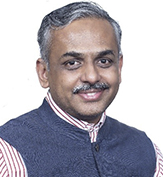
Prof. Deepankar
Choudhury
Prof. T. Kant Chair Professor
IIT Bombay
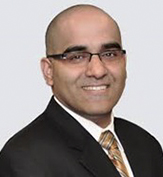
Mr. Satyajit Vaidya
Principal
Langan Engineering & Environmental Services

Dr. Marwan Alzaylaie
Senior Manager
Dubai Development Authority
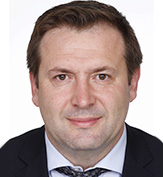
Dipl.-Ing. Robert Dunaevskiy
Engineering Company Prof.
Katzenbach and Partners
WiDF India Session
Schedule: 20 September, 2024

Odette Da Silva
With 37 years of dedicated and sincere service in Goa Public Works Department, Angelica Lianne Sarita Odette Da Silva rose through the ranks to the most distinguished post of Chief Engineer, thereby becoming the first lady Chief Engineer of the Goa Public Works Department, in the history of Goa since the Liberation. She was born on 26th of September 1963 in Margao, Goa; she got her primary education and schooling in St Thereses High School in Vasco da Gama, passing her SSC examination of the Goa Board in merit list. She graduated in Civil Engineering from Bombay University with Honours. She is an alumni of Goa Engineering College. In the year 1987 she joined the Public Works Department and served with enthusiasm and courage for almost four decades in different positions. She has been an inspiration to all women Engineers in the organisation. She is full of compassion and empathy to the underprivileged and also a philanthropist by nature. She has keen interest and passion in conservation and preservation of heritage structures. She has affiliation to several scientific and technical institutes.
Cultural Program
Schedule: 20 September, 2024 at 6:45 p.m. - 8:15 p.m. IST
Details coming soon.
Conference Proceedings
Conference proceedings and presentations will be made available to the registered delegates at DFI website after the conference. Selected papers will be published by Springer Nature under the series 'Lectures in Civil Engineering' five to six months after the conference. Only the papers / presentations with publication agreement from the authors will be made available.
Professional Development Hours (PDHs)
Certificates are provided via email to all attending registrants. Each session of the conference provides 3.0 PDH hours, a total of 15 PDH for all three days.